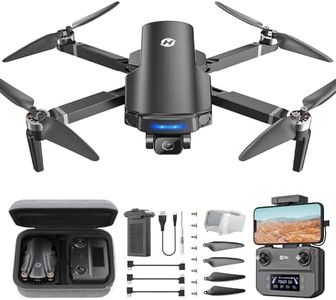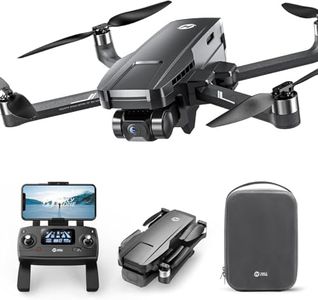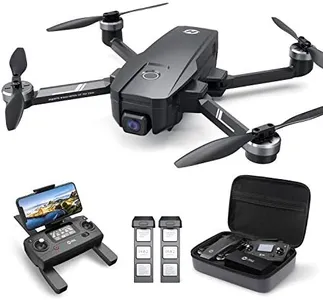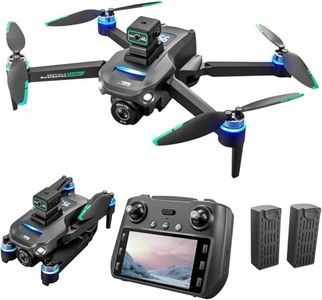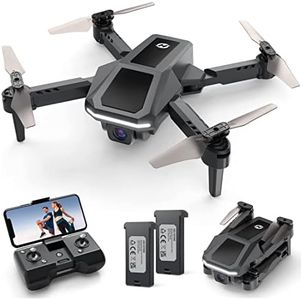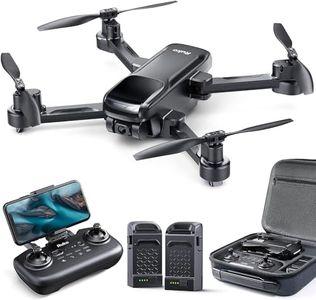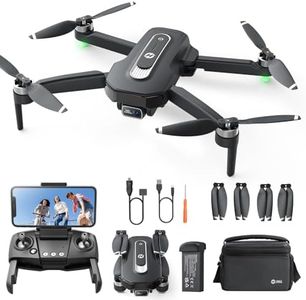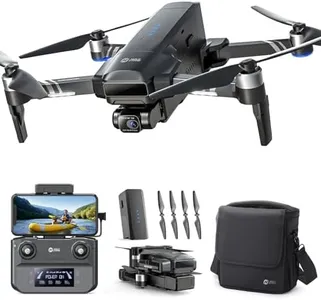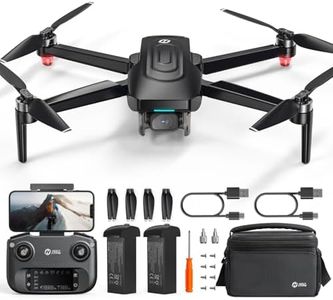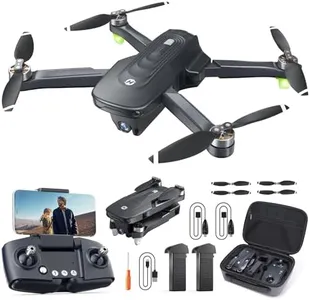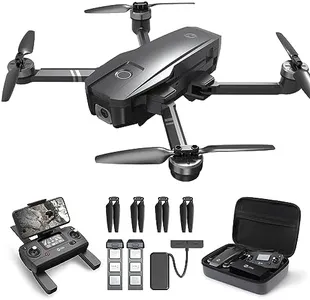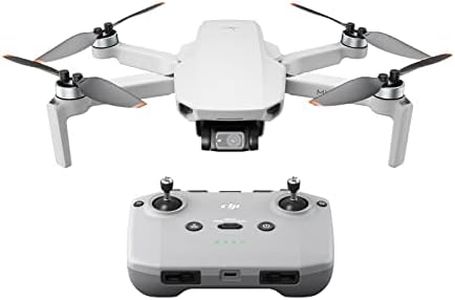We Use CookiesWe use cookies to enhance the security, performance,
functionality and for analytical and promotional activities. By continuing to browse this site you
are agreeing to our privacy policy
10 Best Drones With Camera And Gps
From leading brands and best sellers available on the web.Buying Guide for the Best Drones With Camera And Gps
Shopping for a drone with a camera and GPS can be both exciting and a bit overwhelming with so many choices on the market. Drones today come packed with features, but finding the right one depends mostly on how you plan to use it, such as for casual photography, travel vlogs, or even more professional video shoots. It's important to know what features matter and how they affect your flying experience and results. By understanding the key specs and relating them to your needs, you can find a drone that’s fun, reliable, and produces the images or videos you want.Camera ResolutionCamera resolution refers to the sharpness and level of detail the drone's camera can capture, usually measured in megapixels (MP) for photos and as resolution size (such as 1080p or 4K) for videos. A higher resolution means crisper images and clearer videos, which is especially important if you want to crop, print your photos, or produce professional-looking videos. Lower resolutions (e.g., below 12MP for photos, 1080p for video) are fine for casual use and quick social media posts, while higher resolutions (like 20MP, 4K or even 5.4K video) are preferred for enthusiasts and professionals. To find the right resolution for you, consider how and where you plan to use your footage: if it’s just for family and friends, a moderate resolution suffices, but if you're aiming for cinematic quality or commercial purposes, opt for the upper range.
Flight TimeFlight time indicates how long the drone can stay airborne on a single battery charge. Most consumer drones offer flight times ranging anywhere from 8 minutes to about 30 minutes. Shorter flight times can be limiting if you wish to film longer activities or explore wider areas without frequent landings to replace or recharge batteries. For basic or indoor use, shorter flight times may be acceptable, but for outdoor adventures, travel, or extended filmmaking, look for drones offering 20 minutes or more per battery. Always remember, real-world flight time can be less than advertised, especially if you use features like GPS navigation or fly in windy conditions.
GPS FunctionalityGPS functionality in a drone means it can connect to satellites to know exactly where it is at all times. This enables important features like precise hover, return-to-home, and waypoint flying. A basic GPS can help the drone find its way back if it loses connection or battery gets low, while more advanced systems allow for features like automated flight paths and orbiting a subject. Beginners benefit from GPS for its safety and ease of control, stopping flyaways and simplifying navigation; more advanced users rely on it for specialized shooting modes or mapping. Consider how much you value autonomous features or peace of mind, and let that guide how robust the GPS needs to be.
Gimbal and Image StabilizationA gimbal is a stabilizing device attached to the drone’s camera to keep footage smooth and steady, offsetting the effect of wind or sudden movements. Gimbals can be 2-axis (up-and-down, side-to-side) or 3-axis, with the latter offering the most stable image, especially when flying fast or in windy conditions. For simple, casual flying, electronic stabilization or a basic 2-axis gimbal may be enough, but if you want cinematic shots with buttery-smooth movement, prioritize drones with a 3-axis mechanical gimbal.
Control RangeControl range tells you how far the drone can fly from its remote control or mobile device before losing the signal. Short-range drones may reach a few hundred meters, while longer-range models go several kilometers. For backyard or park fun, a short range works fine, but for exploring wide-open spaces, sports, or travel vlogging, look for longer-range capabilities. Remember that the law may limit how far you can fly the drone beyond your line of sight, regardless of the technical range.
Obstacle AvoidanceObstacle avoidance uses sensors on the drone to detect and help avoid collisions with trees, buildings, and other objects. Some drones have forward-only sensors, while more advanced ones feature sensors in multiple directions. For cautious flyers, beginners, or those operating in tight or unfamiliar places, robust obstacle avoidance is very helpful and increases safety. If you fly mostly in open spaces, you might not need advanced avoidance features, but for cityscapes or technical flying, it’s a smart feature to have.
Portability and FoldabilityPortability is about how easy it is to carry the drone around, often determined by its size, weight, and whether it can be folded into a smaller shape. Travelers and hikers will find foldable, lightweight drones far easier to pack and carry, while those who mostly fly close to home may not need to prioritize this. If you want to bring your drone everywhere or take it on adventures, look for compact, foldable designs.


